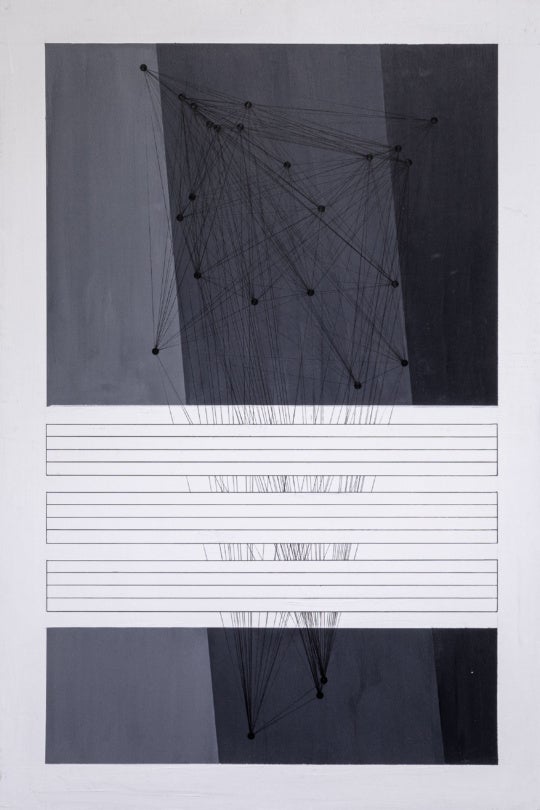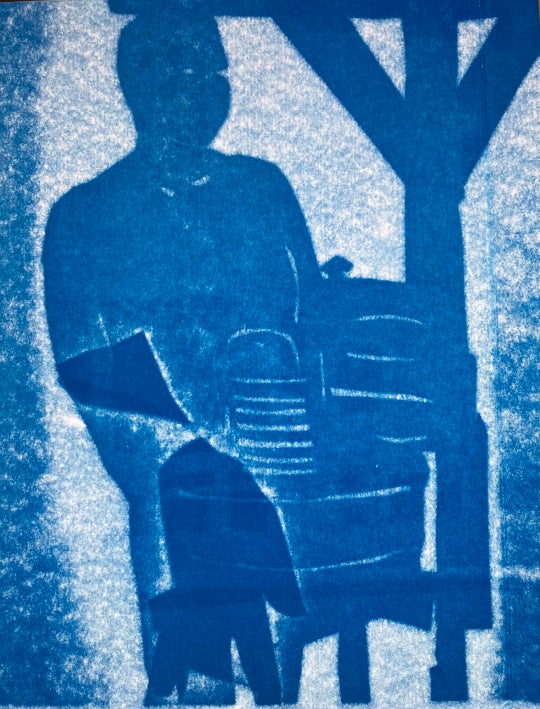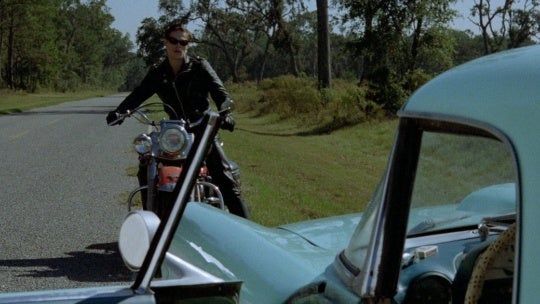
Art is a form of communication. The visual language of pictures and symbols spans cultures and breaches the boundaries of speech. Viewers personify it by asking: What does it mean? What is the art saying? The sculptures in Greely Myatt’s show, “Maybe I Can Paint Over That,” at Sandler Hudson Gallery depict these articulations and audience-art conversations.

The symbols Myatt creates out of cut wood and bent steel are ubiquitous icons that have been used, in different iterations, for over 1,400 years. Thought and speech bubbles were in use as far back as 600 A.D. in Mesoamerican art, appearing in the form of scrolls streaming from the speaker’s mouth. Over the years, these visual representations of speech have taken the form of scrolls, balloons, and bubbles in illuminated manuscripts in the Middle Ages, political cartoons during the Revolutionary War, the first-known newspaper comic cartoon Yellow Kid in the late 1800s and the golden age of comic books that followed in the decades after, then again when Pop artists adopted the visual language of comics. Myatt’s free-floating speech and thought bubbles mimic a Pop art sensibility, but in a way that translates the symbol into the language of our current era, where it has been recast in technological correspondence and advertisements.

The work ReDot (2014), for example, consists of a gallery light illuminating a blank spot on the gallery wall, encircled by half-painted red steel speech bubbles. In 4 Blue Delta, a blue triangle is formed by another cluster of speech bubbles, painted blue over black. Color (as symbolic as the bubble) and material are key to Myatt’s work, as is negative space augmented by cast shadows, and he makes those intentions clear in the work Comet (2016), for which he lists “steel, wax, and air” as his materials. The speech bubbles in Oh $#*t (2016) align in a sequential pattern viewers may recognize from comic books. Black-painted wood cutouts, backlit by neon lights, transition from blue speech bubbles to a red jagged form like the type often used for explicit language.

Three of his wall-hung sculptures reference facets of language and communication in greater depth. Untitled and Tumbleweed (both 2014) embody language’s ambiguity and occasional failure. The steel thought bubbles in Tumbleweed are almost unrecognizable, bent and tangled on the floor. Exclamation Point’s minimalistic and illuminated form embodies a philosophy the Transcendental writers would celebrate, while Weathervane, a question mark and inverted exclamation point atop a wooden pedestal, exudes the grace of Brancusi’s Bird in Space.

wood, 120 by 12 by 6 inches. (R) Greely Myatt, Weathervane, 2016; pine, cedar, and rubber, 120 by 8 by 8 inches.
Myatt’s art speaks for itself. A few of the works included in the show use text, but his most successful works are the ones that don’t, because some things are better left unsaid.
“Maybe I Can Paint Over That” is on view at Sandler Hudson Gallery through December 10, with an artist talk by Myatt at 2pm.
Jac Kuntz is an arts writer, editor, journalist, and artist living in Atlanta. She is a recent graduate of the Masters of Arts Journalism program at the School of the Art Institute of Chicago. She also holds a BA in psychology and a BFA in painting with a concentration in art history from Clemson University.




